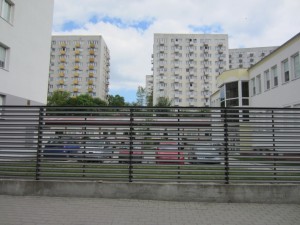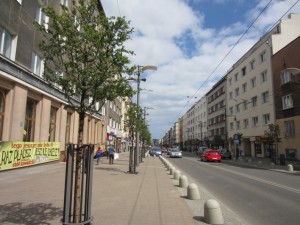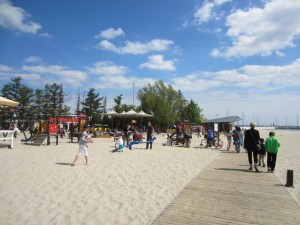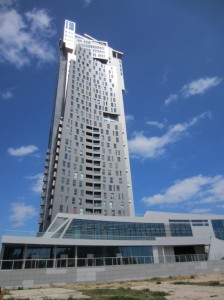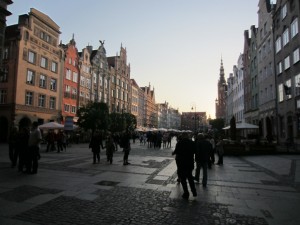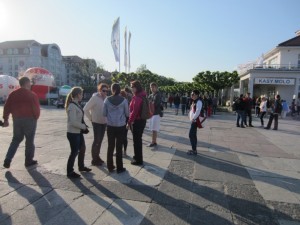OC 45: Open City Fatigue?
Exhaustion
Does it still make sense to reflect on open cities? Is it worthwhile discussing actions of others who contribute to open up cities in the public domain, trying to contribute individually towards more open cities? Or has the time come to succumb to the forces which fragment cities, privatise the public realm, colonise the urban common?
Is it a matter of exhaustion, of having nothing more to say about the relentless repossession of the urban by capital and commodification?

2_dia love of money, source: http://www.thefacultylounge.org/2010/04/for-love-or-money-conference-post-script-part-ii.html picture by Rein Nomm
A blog is only as good as its last entry, and a blog only survives when it renews itself continuously. Mine has stagnated for two months, so a decision is needed to continue or withdraw. The question is: is there a rationale for a blog on open cities? It is true that there is no lack of onslaught on urban public life; conversely there is no end to city dwellers reclaiming the streets, so why not continue critical comments on these events?

3_dia ultimate onslaught on using streets as public realm in Damascus, source: http://www.flickr.com/photos/syriana2011/5650170099/in/faves-doumarevolution/
What is an open city?
Perhaps it is time to reposition what is meant by ‘open city’, and whether there exists a popular consensus about its worth.
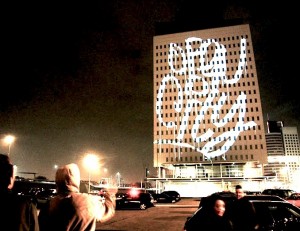
4_dia Open City graffiti, popular expression? source: http://www.christiaanse.arch.ethz.ch/index.php?lang=en&page_id=66
Perhaps, in an increasingly fragmented society, fuelled by institutionalised fear of terrorism, aided and abetted by surveillance inflation, there is no place for openness. Perhaps life behind gates and fences, controlled by CCTV and uniformed janitors, reached by armoured cars protected by body guards is the urban future.
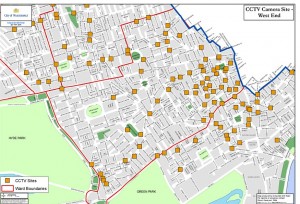
5_dia CCTV density in central London, source: http://www.furtherfield.org/reviews/mapping-cctv-around-whitehall
It takes root everywhere, obviously not universally and not in this extreme form, but people start to live in gated communities because their friends are doing so and say it makes them feel safe, as Anna Minton points out in her book ‘Ground Control’ (Penguin 2012, second edition). Are gated communities an inherent expression of neo-liberal capitalism? Gated communities also spring up in countries which have embraced liberal capitalism relatively recently. Gdynia on the Polish Baltic sea is one example.
Diffusion of urbanistic models
Inserting gated communities into this ‘new town’ created out of necessity during the interwar period on modernist principles represents quite a sea change. In need of a port when Gdanks was taken over by Germany, Poland built a new port next to it. It still persists, together with the new town, a rare example of a direct translation of CIAM principles into reality. Even the additions from the communist times – mainly prefabricated housing blocks – have not eradicated the essence of these new town principles.
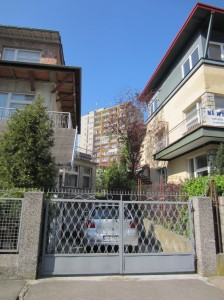
7_dia cohabitation, Gdynia thirties new town and communist seventies prefab blocks, photo Judith Ryser
The generous public open spaces are still there while the green areas have matured. What was an industrial city attached to what used to be the main Polish port reflects a human scale. It feels like a place of well being, of open and shared urban life.
Except for the skyscraper – the first of a planned many – just completed on the edge of a disused harbour dock. It is sticking out like a sore thumb and obstructing an unaltered view onto the sea from the city. This pride of the city fathers was designed to represent post-modernity. It says: Poland has joined the club of real cities with steel and glass tower blocks where the elite can live above the common people, where international headquarters are managing Poland’s foreign inward investment. Except for people’s choice which comes along with capitalism. Who will pay € 3000/m2 in a tower block exposed to Baltic storms when € 1000/m2 purchases a villa in the hills behind the city surrounded by forests? Only time will tell.
Some of us urbanists were invited to contribute to reflect on the possibility of creating a polycentric urban network along the Polish Baltic sea, encompassing Gdanks the first Polish port of ‘solidarnost’ fame, Gdynia its competitor and Sopot a booming spa town. Gdynia calls it tri-city, a term not adopted by the other two cities though, for reasons of city pride perhaps. Does it make sense to duplicate each other’s infrastructures and facilities, or would it be more sustainable to seek complementarity and cooperation between the urban settlements along the coast and its hinterland? Already, the two ports are competing for trade with other parts of the Baltic, so it is sensible to build a new airport, when the regional airport located near Gdanks has just been enlarged to accommodate greater and more up to date air traffic?
Or would it be more profitable for the region as a whole and perhaps even for Poland if networked cities managed to build on their respective specificities and strengths with shared infrastructure and good connections?
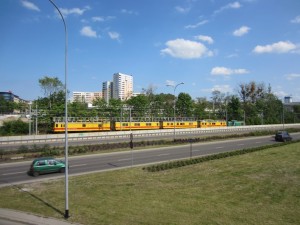
13_dia main connection between Gdynia, Gdansk and Sopot woith added fast train and motorway planned, photo Judith Ryser
The jury is still out on this one. Meanwhile, there remains a large amount of buildings, pre-war as well as from communist times in need of regeneration, alongside many war damaged urban sites in central locations which could do with a ‘post-post modern’ approach which may be better at retaining an urban human scale and refurbishing the public realm instead of copying American CBDs from the last generation.


